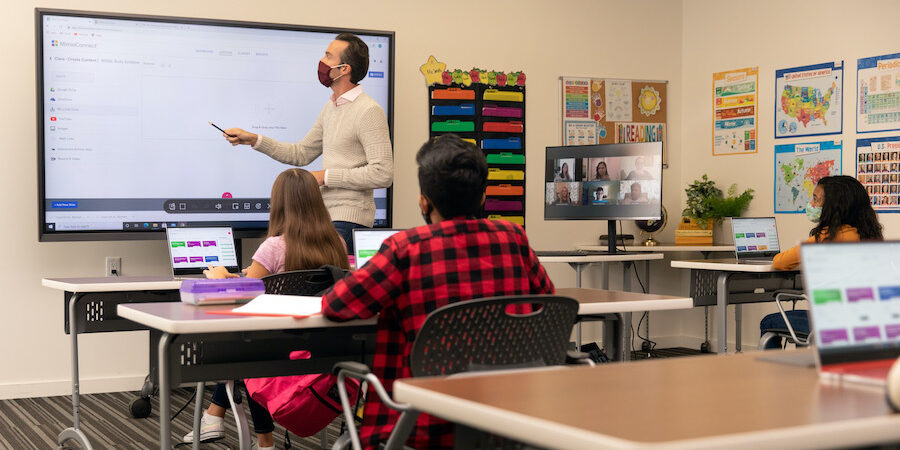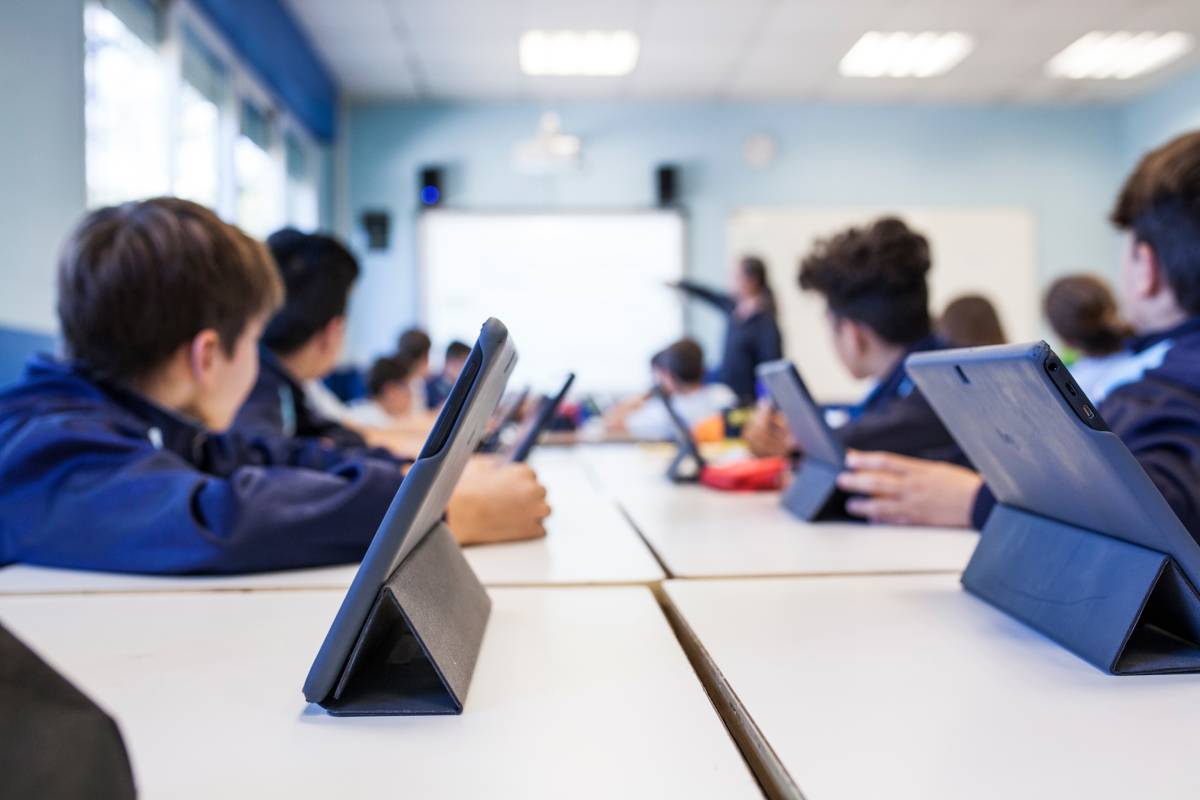Accelerate Learning with Primary Science Tuition Singapore for Young Minds
Wiki Article
A Comprehensive Guide to the Various Discovering Methods in Key Science Guideline
The expedition of diverse understanding approaches in main scientific research guideline offers a possibility for instructors to enhance pupil engagement and understanding considerably. By examining hands-on learning strategies, inquiry-based approaches, and collaborative techniques, we can recognize effective practices that accommodate different discovering styles. Additionally, the assimilation of innovation and differentiated direction plays a crucial duty in promoting a comprehensive setting. The concern continues to be: how can these methods be properly applied in the classroom to optimize their influence? The response depends on a more detailed assessment of each technique and its ramifications for training science.
Hands-On Knowing Strategies
Hands-on learning techniques play an essential role in key scientific research direction, involving trainees in active expedition and trial and error. These methods allow learners to connect directly with phenomena and materials, cultivating a deeper understanding of scientific concepts. By utilizing manipulatives, versions, and real-life experiments, teachers create an atmosphere where trainees can observe, assume, and evaluate their concepts.Such methods not only enhance understanding yet also cultivate vital reasoning and analytic abilities. When students join tasks like developing easy makers, growing seeds, or performing chain reactions, they are urged to ask questions and seek answers via their own observations. This experiential strategy aids to debunk complicated scientific principles, making them a lot more relatable and available.
Furthermore, hands-on discovering promotes cooperation among peers, as trainees commonly operate in groups to conduct experiments or share searchings for. This teamwork not only enriches their understanding experience yet likewise establishes important social abilities. Inevitably, incorporating hands-on techniques in key scientific research direction promotes a lifelong love of understanding and curiosity regarding the environment, laying a solid foundation for future scholastic pursuits in science and past.
Inquiry-Based Discovering
Inquiry-based learning is an educational strategy that urges pupils to ask questions, investigate sensations, and create their very own understanding of scientific principles. This approach changes the emphasis from standard teacher-led instruction to an extra student-centered experience, where students take the campaign in their instructional journey. By promoting interest, inquiry-based understanding promotes deeper interaction with the material, allowing trainees to discover subjects in a purposeful context.In method, this approach usually entails hands-on experiments, monitorings, and essential reasoning tasks that straighten closely with the clinical method. Pupils are motivated to formulate hypotheses, layout investigations, and examine information, which grows essential abilities such as analytical and problem-solving thinking. The duty of the educator in this framework is to help with exploration, leading trainees through the query process while encouraging independent thought and partnership.
In addition, inquiry-based knowing nurtures a feeling of possession over the discovering procedure, motivating trainees to pursue knowledge actively. This method not only improves understanding of clinical concepts yet likewise fosters a long-lasting love for understanding, furnishing students with the skills needed to navigate an increasingly complicated globe.
Collaborative Learning Approaches
Collective discovering approaches equip students to take part in significant interactions with peers, fostering a shared responsibility for their instructional results. In primary scientific research direction, these techniques encourage learners to collaborate to check out scientific principles, address troubles, and carry out experiments (primary science tuition Singapore). By joining group tasks, students can take advantage of varied point of views, permitting richer understanding and retention of clinical knowledge
One secret element of collaborative understanding is the focus on interaction abilities. Students must verbalize their thoughts, listen proactively to others, and discuss concepts, every one of which are essential expertises in both real-world and scholastic contexts. This social communication not only improves their understanding of scientific principles yet likewise advertises synergy and conflict resolution abilities.
When students see the worth of their contributions within a group, they are more likely to take possession of their learning journey. Generally, incorporating joint discovering techniques in primary scientific research instruction grows a vibrant knowing environment that prepares students for future scholastic and social difficulties.
Innovation Assimilation in Scientific Research
The assimilation of modern technology in main scientific research guideline boosts discovering experiences by supplying innovative tools and resources that support numerous mentor methods, including collaborative learning - primary science tuition Singapore. The usage of digital platforms, simulations, and interactive applications allows trainees to involve deeply with scientific concepts, assisting in a more hands-on strategy to learningDigital laboratories, for example, make it possible for learners to carry out experiments securely and successfully, advertising inquiry-based discovering. These tools can mimic real-world clinical resource situations, allowing trainees to imagine intricate procedures that would be hard to replicate in a traditional classroom setting. Innovation fosters interaction and cooperation among pupils, as they can share searchings for and function together on jobs through on the internet systems.
Additionally, multimedia discussions and instructional video clips can enhance lessons by accommodating varied discovering designs, making abstract ideas much more accessible. Data evaluation devices likewise encourage students to accumulate and analyze scientific information, strengthening crucial believing skills. Generally, the strategic incorporation of modern technology in main scientific research instruction not just enhances engagement however also prepares trainees for a highly advanced society, outfitting them with vital abilities for future scientific ventures.
Distinguished Guideline Techniques
Separated direction techniques are crucial for resolving the varied needs of learners in main science education and learning. These techniques enable educators to customize their teaching approaches to accommodate varying capacities, rate of interests, and discovering styles within the class. By using distinguished direction, educators can develop an inclusive environment that promotes engagement and enhances understanding of scientific principles.One reliable method is to use versatile grouping, which permits students to team up with peers at comparable skill levels or with varying perspectives. This method encourages peer knowing and advertises crucial thinking. In addition, using choices in assignments can empower students, enabling them to select jobs that reverberate with additional resources their interests while still fulfilling curricular goals.
Furthermore, incorporating tiered assignments is one more valuable strategy. Deliberately jobs with differing levels of intricacy, instructors can make certain that all students are suitably challenged, despite their efficiency. Using developmental evaluations to evaluate recognizing additional allows teachers to readjust their training techniques dynamically, making sure that each learner receives the support they need.
Eventually, implementing differentiated instruction methods in key scientific research education and learning not just boosts pupil understanding results but also cultivates an interest for science, preparing students for future academic pursuits.

Final Thought
In summary, efficient primary science instruction demands a diverse technique that encompasses hands-on learning, inquiry-based approaches, and collective strategies. The integration of modern technology and distinguished direction better deals with diverse knowing styles, cultivating an atmosphere conducive to exploration and crucial reasoning. By carrying out these techniques, teachers can enhance student engagement and comprehension, inevitably nurturing a long-lasting enthusiasm for science and inquiry. Such comprehensive methods are crucial for developing educated and curious future researchers.The expedition of varied learning approaches in primary science guideline offers an opportunity for teachers to boost trainee engagement and understanding substantially.Hands-on discovering techniques play an essential duty in main scientific research direction, involving pupils in energetic exploration and experimentation.Inquiry-based understanding is see page a training approach that urges students to ask questions, explore phenomena, and construct their own understanding of scientific principles.Collaborative discovering techniques equip students to engage in significant communications with peers, fostering a common duty for their instructional results. Overall, including collaborative learning approaches in primary science direction grows a vibrant learning setting that prepares trainees for future scholastic and social obstacles.
Report this wiki page